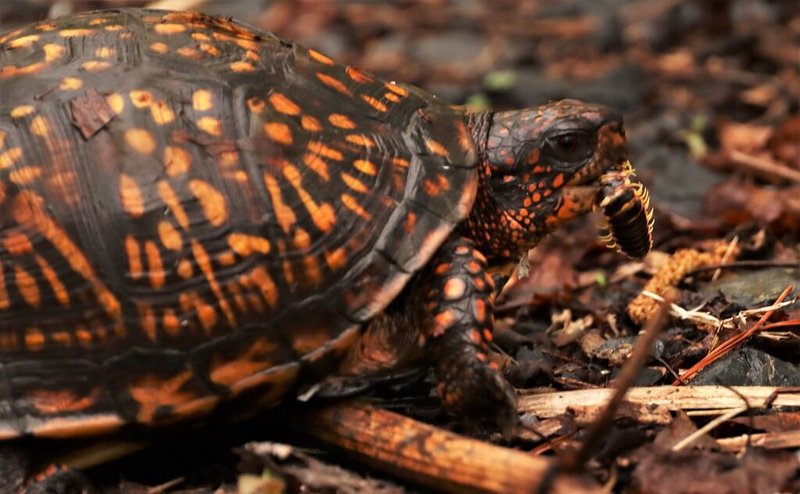
Box turtles are fascinating not just for their diet, but also for how they find their meals. Picture a box turtle as a slow-paced treasure hunter, taking its time to locate and enjoy the little gems of the forest floor. They’re relatively slow movers, but they have some clever techniques up their shell to snag dinner. Interested in how these little wonders do it? Let’s break it down!
Understanding The Box Turtle’s Diet
Box turtles are omnivores, which means they enjoy a wide variety of foods. Their diet consists mainly of:
- Fruits: Strawberries, blueberries, and apples are just a few favorites.
- Vegetables: They love leafy greens like kale and dandelion greens.
- Insects: They snap up worms, slugs, and crickets whenever they can.
- Small Animals: Occasionally, they might munch on small amphibians or even carrion.
You might be wondering why they eat such a varied diet. Well, this flexibility helps box turtles thrive in different environments. Whether they’re in a humid forest, a dry meadow, or a backyard garden, they can adapt and find food. It’s like taking a little piece of each meal from your favorite buffet!
How Box Turtles Find Food
Unlike some animals that use speed or stealth to hunt, box turtles take a more laid-back approach. They tend to forage slowly and methodically. Imagine strolling through a park, taking in the sights and smells. That’s how a box turtle approaches its meal!
They rely heavily on their sharp senses. Box turtles have a keen sense of smell, allowing them to detect fruits and insects from a distance. But it’s not just about what they smell. Their eyesight plays a role too. They can see colors, which helps them identify ripe fruits in the wild. Honestly, it’s kind of impressive how they navigate their habitats to find food.
Foraging Techniques
When hunting for food, box turtles often employ a few clever tactics. One interesting method they use is digging. If a box turtle notices a tasty worm beneath the surface, it will use its feet and sometimes even its beak to dig and get to it. It’s a little like using a fork to get spaghetti from the bottom of a pile!
Another technique involves patience. Box turtles can wait quietly near a bush or a patch of grass, letting potential meals come to them. This is similar to fishing—sometimes, you just have to sit quietly and wait for the right moment to catch something.
The Role of Seasonal Changes in Diet
As seasons change, so does a box turtle’s diet. In spring and summer, they feast on plenty of fruits and insects, taking advantage of the abundant food sources. But when autumn rolls around, they start storing fat for the winter. This means they might shift to eating more high-calorie foods, like nuts and seeds, to build up their energy reserves.
You can think of it like preparing for a long trip. Just as you’d stock up on snacks for a road trip, box turtles gather what they need to make it through the colder months. Plus, in winter, when food is scarce, box turtles hibernate, which helps them conserve energy until spring arrives and the buffet opens up again.
Importance of Diet for Health
The food choices of a box turtle are not just about filling the belly; they play a crucial role in their overall health. Eating a balanced diet helps them maintain a healthy shell, skin, and energy levels. If they consume too much protein or too few fruits, it can lead to health problems, much like how we need a variety of foods to stay healthy.
In captivity, pet owners should try to mimic their natural diet as much as possible. This means offering a mix of fresh vegetables, fruits, and occasional protein sources, keeping an eye on their health and ensuring they’re getting the nutrients they need.
So, what do box turtles eat, and how do they hunt? These charming creatures thrive on a diverse diet and employ clever, patient foraging techniques. By understanding their needs and habits, we can better appreciate these little wonders of nature.
Whether you’re a turtle enthusiast or just curious about these slow-moving foragers, there’s so much more to learn about their lives. They remind us of the beauty of slowing down and enjoying the simple things—like a tasty snack. So next time you see a box turtle, maybe give a nod of respect; after all, they know how to savor life one bite at a time!

